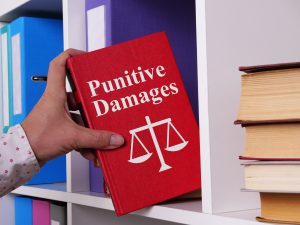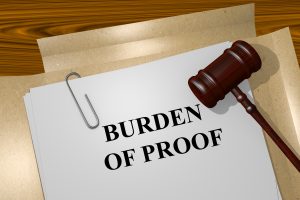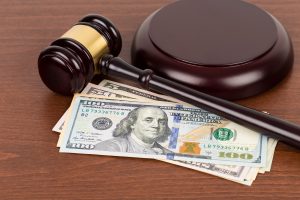Wrong-Way Car Accidents
 We have all heard stories about collisions involving motorists driving towards oncoming traffic in the wrong lane. Wrong-way car accidents occur when a car driving in an inappropriate direction strikes another vehicle. Typically, wrong-way car accidents result in head-on collisions. These car crashes occur more often than most people would think and usually bring about devastating injuries and deaths. In a recent 8-year period, nearly 3,900 fatal injuries were caused by wrong-way crashes.
We have all heard stories about collisions involving motorists driving towards oncoming traffic in the wrong lane. Wrong-way car accidents occur when a car driving in an inappropriate direction strikes another vehicle. Typically, wrong-way car accidents result in head-on collisions. These car crashes occur more often than most people would think and usually bring about devastating injuries and deaths. In a recent 8-year period, nearly 3,900 fatal injuries were caused by wrong-way crashes.
Common Causes Of Wrong-Way Collisions
Drivers who are unfamiliar with a particular area are generally more likely to drive on the wrong side of the road mistakenly. This type of accident also has a higher probability of occurring over the weekend and at night. Some other frequent causes of wrong-way accidents include:
 Buffalo Personal Injury Lawyer News
Buffalo Personal Injury Lawyer News


 In a personal injury or wrongful death lawsuit, the plaintiff may be eligible to obtain damages for their losses resulting from a defendant’s negligence. These damages are typically compensatory, meaning that they are designed to compensate victims for their actual injuries. Compensatory damages can be economic and non-economic, such as medical expenses, physical therapy costs, lost wages, property damage, pain and suffering, loss of enjoyment, and loss of consortium.
In a personal injury or wrongful death lawsuit, the plaintiff may be eligible to obtain damages for their losses resulting from a defendant’s negligence. These damages are typically compensatory, meaning that they are designed to compensate victims for their actual injuries. Compensatory damages can be economic and non-economic, such as medical expenses, physical therapy costs, lost wages, property damage, pain and suffering, loss of enjoyment, and loss of consortium.  Under New York law, a victim who pursues damages, also known as a plaintiff, has the burden of proof. In other words, the plaintiff must present evidence to establish the legal elements required to prove the particulars of their claim.
Under New York law, a victim who pursues damages, also known as a plaintiff, has the burden of proof. In other words, the plaintiff must present evidence to establish the legal elements required to prove the particulars of their claim.  Being the victim of an accident can be an extremely traumatic event, especially if you have suffered injuries, property damage, or other significant losses. Even seemingly minor accidents can have disastrous repercussions, such as life-long disabilities, permanent disfigurements, complete paralysis, and traumatic brain injuries. Since most accidents are unpredictable and transpire with little to no warning, victims are usually uncertain about their next steps. The last thing any accident victim wants to worry about is filing the proper forms. With a highly experienced personal injury attorney, the legal process after an accident does not have to be overwhelming.
Being the victim of an accident can be an extremely traumatic event, especially if you have suffered injuries, property damage, or other significant losses. Even seemingly minor accidents can have disastrous repercussions, such as life-long disabilities, permanent disfigurements, complete paralysis, and traumatic brain injuries. Since most accidents are unpredictable and transpire with little to no warning, victims are usually uncertain about their next steps. The last thing any accident victim wants to worry about is filing the proper forms. With a highly experienced personal injury attorney, the legal process after an accident does not have to be overwhelming.  Being the victim of an accident resulting from another’s negligence or recklessness can have earth-shattering ramifications. Victims who sustain serious injuries forfeit small fortunes in lost incomes, medical bills, and rehabilitation costs. Not to mention, many suffer from severe physical, psychological, and emotional complications. Obtaining reasonable compensation for your injuries is often the best way to start recovering. After suffering severe accident-related injuries, victims frequently pursue personal injury lawsuits to recoup their losses. One of the main types of compensation that courts award to plaintiffs is called special or economic damages.
Being the victim of an accident resulting from another’s negligence or recklessness can have earth-shattering ramifications. Victims who sustain serious injuries forfeit small fortunes in lost incomes, medical bills, and rehabilitation costs. Not to mention, many suffer from severe physical, psychological, and emotional complications. Obtaining reasonable compensation for your injuries is often the best way to start recovering. After suffering severe accident-related injuries, victims frequently pursue personal injury lawsuits to recoup their losses. One of the main types of compensation that courts award to plaintiffs is called special or economic damages. Suppose you have been seriously injured in an accident because of another’s wrongdoing. You may be eligible to pursue monetary compensation through a personal injury lawsuit. However, to hold the other party financially liable for your damages, you must first prove that they were negligent. Understanding the legal elements of negligence can help you win your Buffalo, New York injury claim.
Suppose you have been seriously injured in an accident because of another’s wrongdoing. You may be eligible to pursue monetary compensation through a personal injury lawsuit. However, to hold the other party financially liable for your damages, you must first prove that they were negligent. Understanding the legal elements of negligence can help you win your Buffalo, New York injury claim.  Victims often turn to personal injury claims to recoup their losses after being injured in accidents. If the verdict is in the plaintiff’s favor, they can obtain a monetary award for their losses. One type of damage awarded to victims is called compensatory damages. Compensatory damages are designed to pay victims money to cover the costs related to their injuries and other losses. In other words, this type of damage is awarded to compensate plaintiffs for the actual losses they have suffered. For instance, if a careless motorist smashed into your car and totaled it, the compensatory damages would equal the fair market value of your vehicle when it was demolished, minus the salvage value or any usable parts. The two types of compensatory damages that courts can award to plaintiffs are special damages and general damages.
Victims often turn to personal injury claims to recoup their losses after being injured in accidents. If the verdict is in the plaintiff’s favor, they can obtain a monetary award for their losses. One type of damage awarded to victims is called compensatory damages. Compensatory damages are designed to pay victims money to cover the costs related to their injuries and other losses. In other words, this type of damage is awarded to compensate plaintiffs for the actual losses they have suffered. For instance, if a careless motorist smashed into your car and totaled it, the compensatory damages would equal the fair market value of your vehicle when it was demolished, minus the salvage value or any usable parts. The two types of compensatory damages that courts can award to plaintiffs are special damages and general damages. Victims suffer injuries in tens of millions of severe accidents every year, such as slips and falls, collisions, and dog bites. Most of these injuries are caused by someone else’s negligence or even recklessness. The consequences of being involved in an accident can range from serious personal injuries and post-traumatic stress disorder to the destruction of property and costly hospital bills. Over 40 million accident victims require medical care due to various personal injuries each year. If you or a loved one have been injured due to someone else’s negligence, you may be wondering what type of lawyer to call.
Victims suffer injuries in tens of millions of severe accidents every year, such as slips and falls, collisions, and dog bites. Most of these injuries are caused by someone else’s negligence or even recklessness. The consequences of being involved in an accident can range from serious personal injuries and post-traumatic stress disorder to the destruction of property and costly hospital bills. Over 40 million accident victims require medical care due to various personal injuries each year. If you or a loved one have been injured due to someone else’s negligence, you may be wondering what type of lawyer to call. An accident victim could file a claim against an employer if their employee caused their accident in certain situations. Since the employee caused the accident, you may be wondering how the victim can pursue a personal injury lawsuit against their employer. The answer lies in an old legal theory called respondeat superior. Respondeat superior originates from an ancient Latin saying, “let the master answer.” This principle held masters legally responsible for the actions of their servants. In the modern world, respondeat superior is still commonly applied in common law to hold employers liable for the actions of their employees.
An accident victim could file a claim against an employer if their employee caused their accident in certain situations. Since the employee caused the accident, you may be wondering how the victim can pursue a personal injury lawsuit against their employer. The answer lies in an old legal theory called respondeat superior. Respondeat superior originates from an ancient Latin saying, “let the master answer.” This principle held masters legally responsible for the actions of their servants. In the modern world, respondeat superior is still commonly applied in common law to hold employers liable for the actions of their employees.  Many accident victims seeking damages in personal injury lawsuits are surprised to learn that an insurance company, doctor’s office, physical therapy clinic, or another party has placed a medical lien against their monetary compensation. As a result, victims may receive significantly less money than they anticipated. Since liens can substantially affect your financial outcome, knowing what they are and exactly how they work is crucial.
Many accident victims seeking damages in personal injury lawsuits are surprised to learn that an insurance company, doctor’s office, physical therapy clinic, or another party has placed a medical lien against their monetary compensation. As a result, victims may receive significantly less money than they anticipated. Since liens can substantially affect your financial outcome, knowing what they are and exactly how they work is crucial.